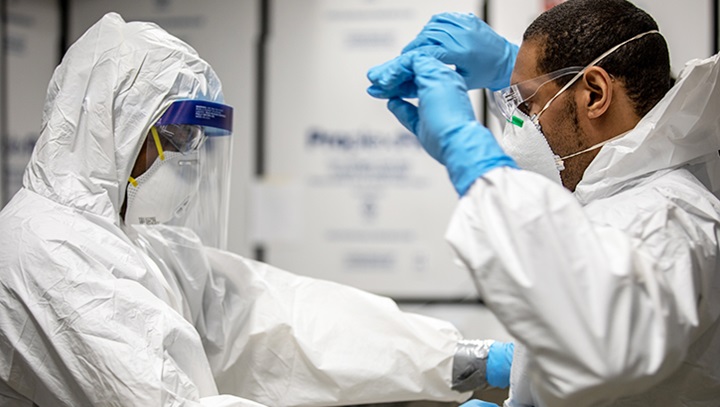As we slowly emerge from the enforced hibernation of the coronavirus pandemic, the ballyhooed but battered healthcare industry must begin to embrace a new normal. Although every industry is grappling with how to return to action as states begin to reopen, the healthcare industry bears the added burden of making sweeping changes on the fly without the hiatus that was forced upon other industries. Indeed, healthcare professionals have been working overtime while most of the county has been on pause for the last couple of months.
One of the most important things to remember as the spread of Covid-19 abates is that progress will be gradual. Furthermore, healthcare pros have to remain as vigilant as ever in their efforts to contain the disease. The reality is that the measures that were enacted when the coronavirus reached our shores have become the new normal. At this point, healthcare workers are well aware that these precautions will probably have to remain in place until we develop an effective vaccine. Since the most optimistic estimates for a vaccine range target the spring of 2021, it’s clear that we are in for the long haul.
Non-Urgent Procedures
One of the first orders of business for healthcare professionals will be deciding which non-urgent procedures to put back on the schedule. In every instance, doctors and nurses will have to weigh a procedure’s benefit against that patient’s risk of contracting coronavirus and its subsequent complications. Initially, physicians are more likely to perform less complex procedures since they involve less overall risk. For example, a patient awaiting minimally invasive spinal surgery is a much easier procedure to schedule right now over someone who needs a cervical disc replacement.
Do Healthcare Facilities Have Resources for Non-covid-19 Issues?
Another factor to consider as healthcare workers return to elective surgeries is whether their hospitals or health facilities currently have the materials and personnel to devote to these types of procedures. Since so much available equipment and supplies have been allocated to combating coronavirus these past few months, healthcare pros need to take stock of their resources to determine which procedures won’t strain the healthcare system.
Are Healthcare Workers and Patients Prepared to Return?
One of the great unknowns as we begin to reopen is whether prospective patients will avoid healthcare altogether for fear of contracting the virus. For instance, a patient needing physical therapy to recover from a sports injury may prefer to deal with chronic pain for the time being in lieu of entering a healthcare facility.
On the other hand, some healthcare workers may also be unwilling to return. Due to the pandemic, many places are understaffed because personnel are on medical leave or taking care of family or just not comfortable in the current environment. A physical or occupational therapist may decide the risk isn’t worth returning to the workforce at the moment; he or she may also decide it’s time to pursue other opportunities.
A Well-Defined, Coherent Testing Strategy
The key to addressing people’s healthcare needs safely will be developing and maintaining an effective testing strategy to monitor the spread of Covid-19. If testing, treating and tracing remain a high priority, then healthcare workers can stay abreast of the status of the virus in their communities. Essentially, healthcare systems need to form a collective effort with state and local governments to plan for a long-term health emergency.
Like the rest of society, the healthcare industry remains reliant on the latest data, scientific evidence, and information on coronavirus activity to return to anything resembling normality. While it’s tempting to think that we are nearly home free as the virus declines in number, any steps toward reclaiming our lives must be gradual. We cannot lose sight of the notion that, as Covid-19 becomes somewhat manageable in our communities, both healthcare professionals and the population at large must proceed with caution. In other words, frequent hand washing, social distancing, and face masks are here for the foreseeable future because they remain our best protection against the coronavirus.




